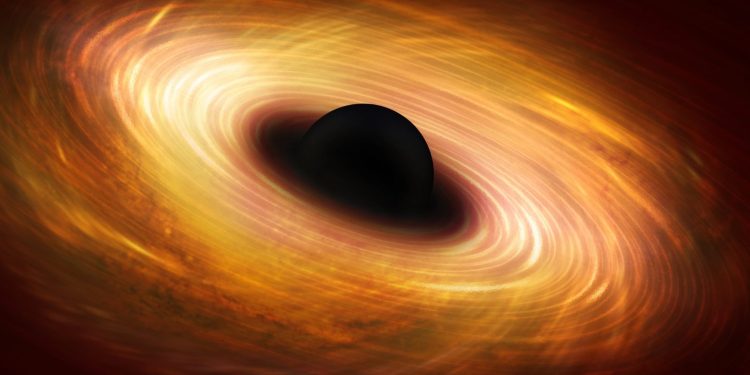For more than thirty years, cosmologists have worked by assuming that around 95% of the universe has been composed of two mysterious entities: dark matter, which has a gravitational traction without emitting light and black energy, which seems to accelerate the expansion of the universe. These ideas have become key pillars of the standard cosmological model, guiding both theoretical development and large -scale experimental research.
Now, the physicist Rajendra Gupta offers a radically different perspective. In his latest research, he attributes cosmic phenomena generally linked to dark matter and dark energy to a much simpler mechanism: the progressive weakening of the fundamental forces of the universe over time. This approach removes the need for unknown particles and rather reinterprets observations well documented by evolving physical constants.
A unifying equation for two cosmic puzzles
One of the most convincing aspects of the GUPTA model is its ability to link two main sets of astronomical observations in a single frame. On cosmological scales, where the universe appears largely uniform over hundreds of millions of light years, dark energy was used to explain its accelerated expansion. Meanwhile, on smaller and quieter scales – such as galaxies and clusters of galaxies – the question of the question is invoked to explain the additional gravitational forces necessary to maintain the structures together.
According to LBV magazineGupta’s theory proposes that these apparently unrelated phenomena can be described by a single equation involving a variable parameter called α, which reflects the evolutionary force of the fundamental forces of nature. “”Ours is the only one who explains them with the same equation, and without needing dark matter or black energy“He said. This parameter is adjusted as a function of the observed scale – treated as constant at the cosmological level, and authorized to vary in galaxies where the distribution of material is more complex.


Explain the rotation of the Galaxy without dark halos
One of the longtime anomalies of astrophysics was the galaxy rotation curves. Observations show that the stars on the outer edges of the galaxies run much faster than expected according to the visible mass. Traditionally, this gap has been explained by offering solid halos of black matter surrounding the galaxies.
The Gupta model questions this interpretation. As detailed in the same report, he suggests that variations in α, caused by non -uniform distribution of ordinary matter, generate additional gravitational effects. These effects imitate the presence of dark matter without requiring invisible mass. When the material is densely excited, the additional severity is minimal. But in more claims regions, the gravitational effect is improved, accurately reproducing the flat rotation curves observed in many galaxies.
This approach not only provides a simpler explanation for a key phenomenon, but it also maintains consistency with the laws of physics already known, without introducing unconucted entities.
Stretch the cosmic chronology to resolve training puzzles
Another consequence of this new model lies in its impact on the chronology of the universe. Recent observations have revealed galaxies and supermassive black holes forming earlier in cosmic history that current theories cannot explain comfortably. This has led to speculation on new types of matter or unknown physical processes.
By incorporating the gradual weakening of forces into cosmic evolution, the GUPTA framework extends the actual age of the universe, allowing more time for large structures to be formed. According to the same article, it means “It is not necessary to suppose an exotic particle or to break the laws of physics. “It offers a revised chronology that aligns better with the rapid appearance of galaxies in the early universe, avoiding the need for acceleration based on energy or a grouping of dark matter.
The proposal, although still at its beginnings, invites a re-evaluation of the hypotheses underlying contemporary cosmology. This suggests that the elusive components that scientists have been hunting for decades could be conceptual artefacts rather than real constituents of the cosmos.
It remains to be seen whether this new interpretation will resist a more in -depth examination. But as Gupta himself concludes: “Perhaps the greatest secrets of the universe are only tips played by the constants evolving in nature. “”









